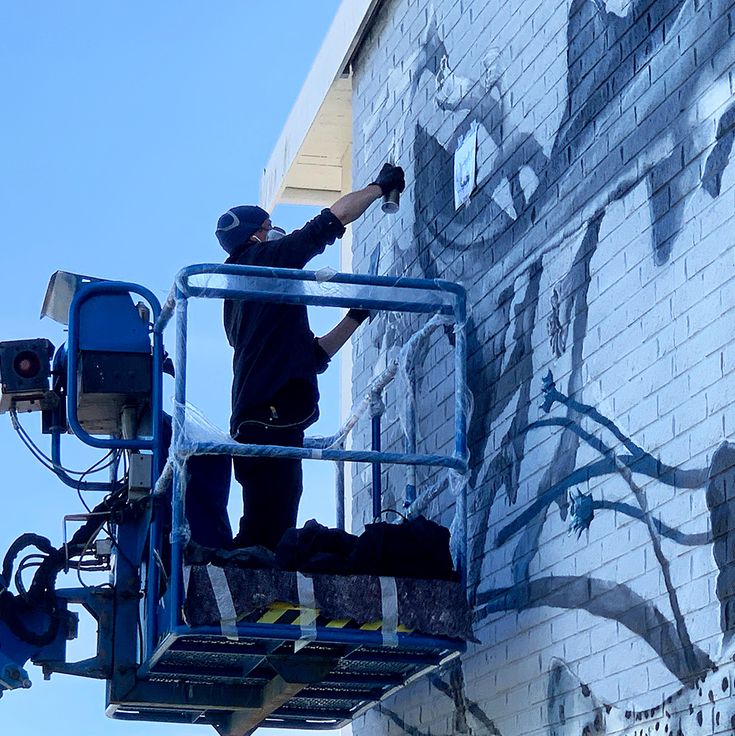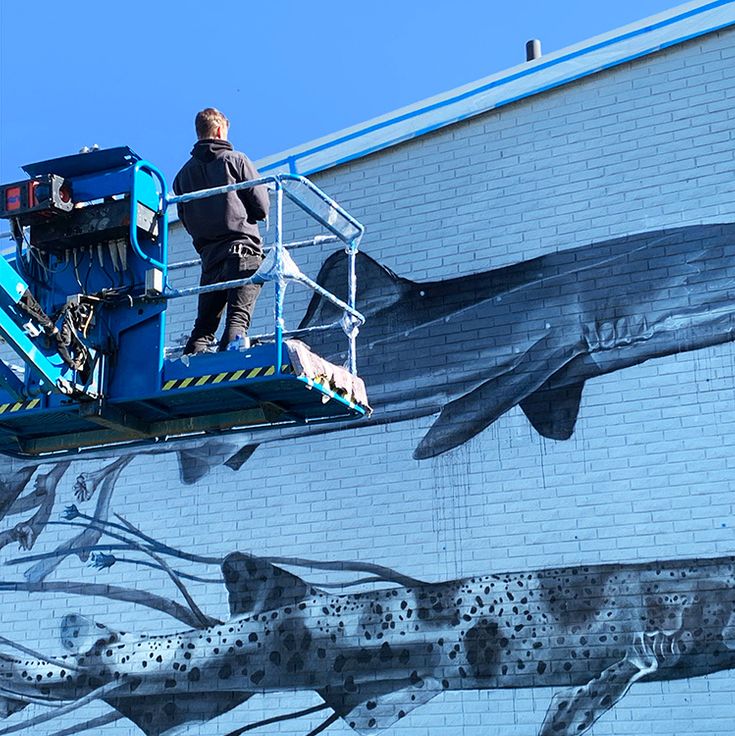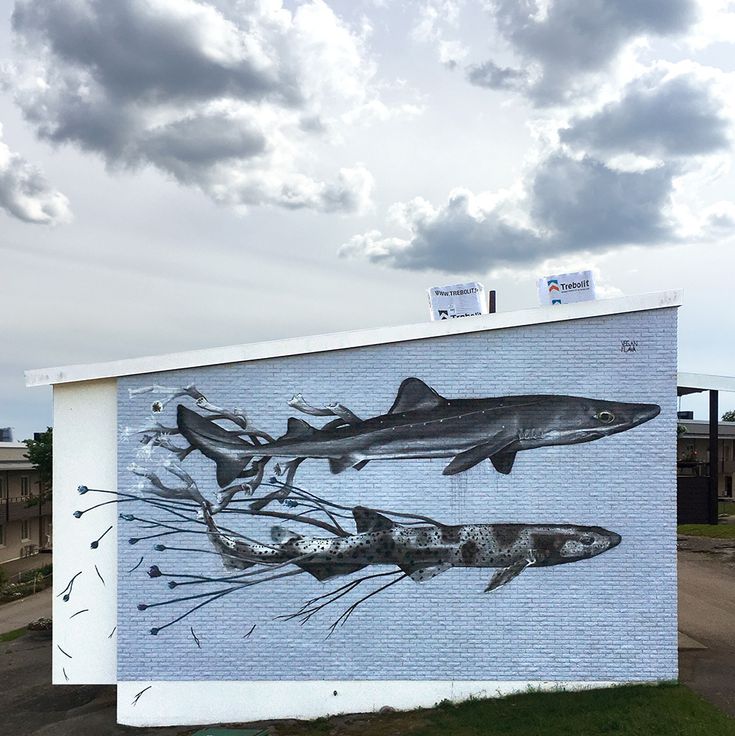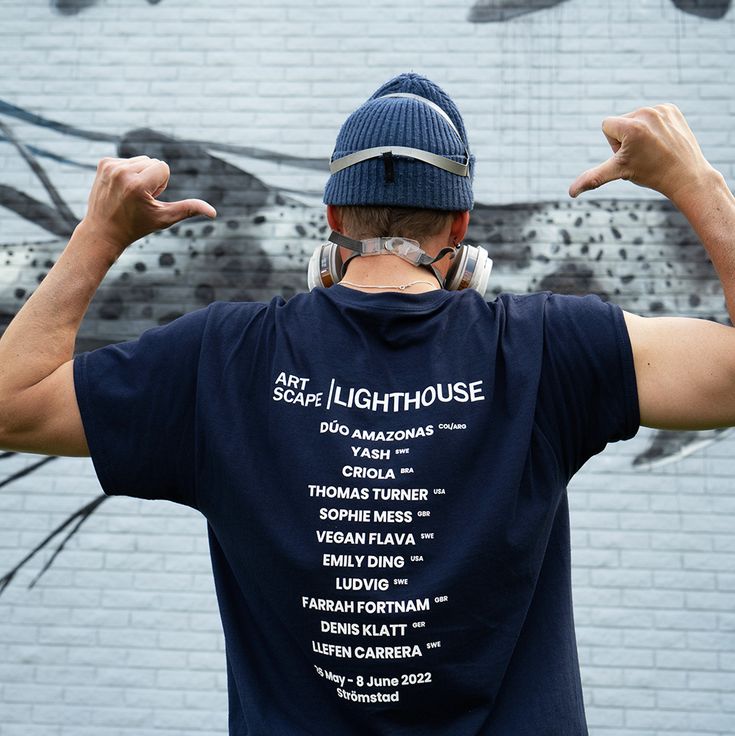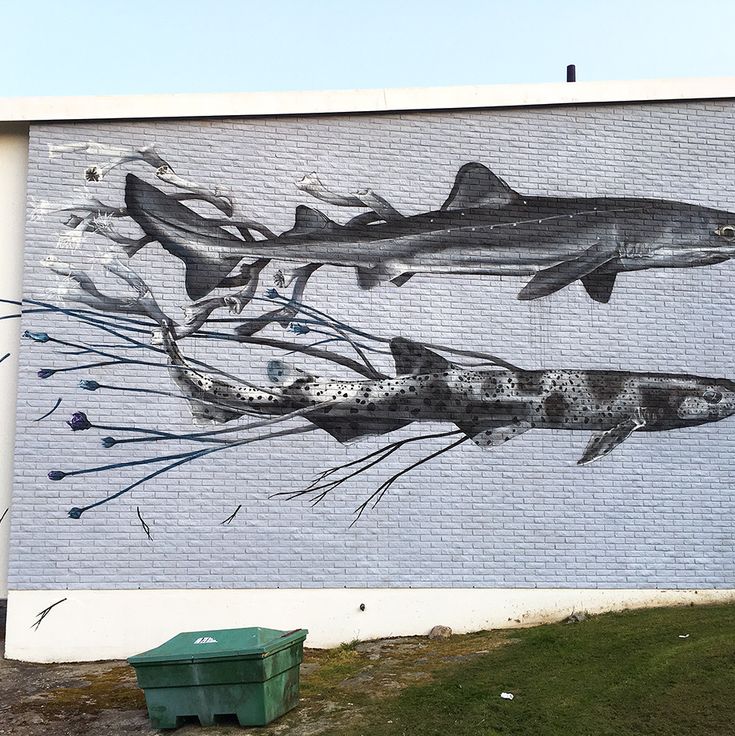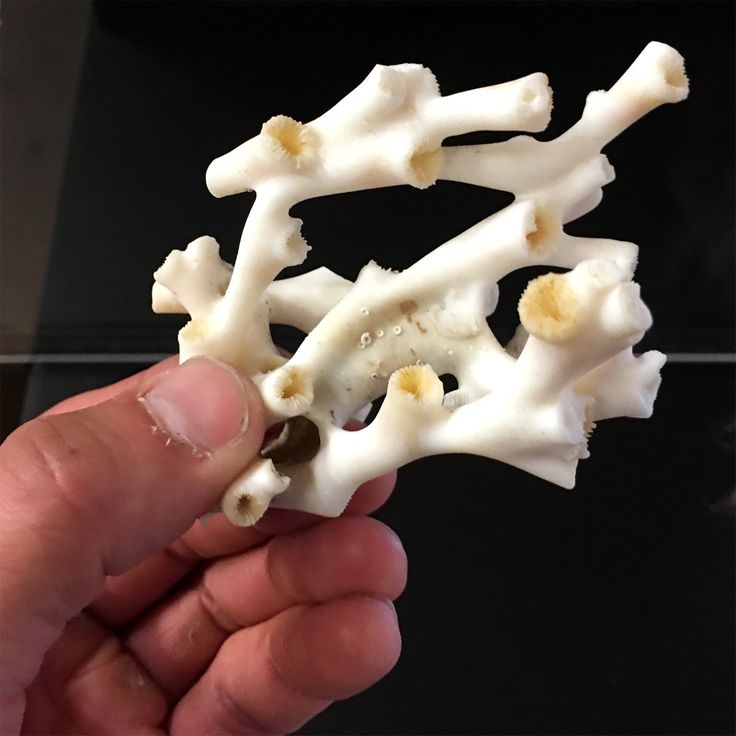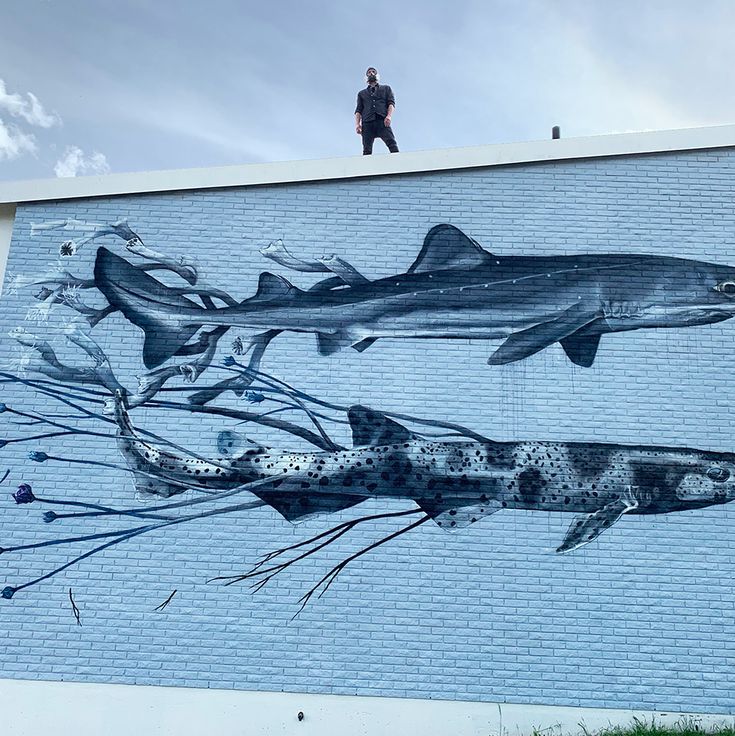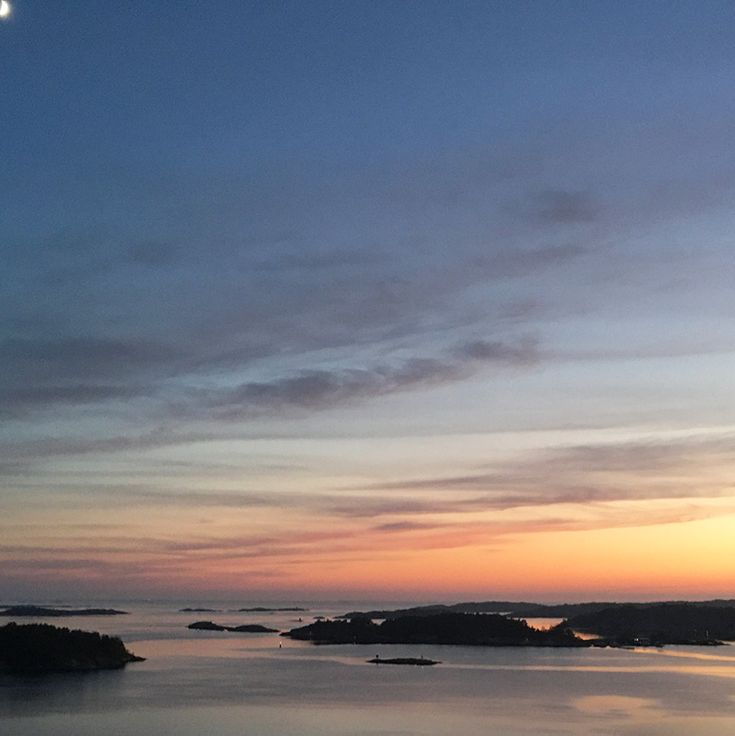NECK-DEEP IN
THE KOSTER FJORD
World Ocean Day 2022
With Artscape Lighthouse
My mural Neck-Deep in the Koster Fjord depicts two sharks, a plant and a coral, which are native to the Koster Fjord on the Swedish west coast, all victims to our way of life. The mural highlights the beautiful achipelago at Kosterhavets National Park which has an unique marine life with over 6 000 species and it is Swedens only marine national park.
I was invited by Artscape to take part in their mural festival Lighthouse in Strömstad on the beautiful west coast of Sweden. The murals where completed and inaugurated on World Ocean Day, June 8th 2022. Thank you to the Artscape team for all the support and to the local community!
There’s about 16 species of charks native to Swedish waters and I’ve chosen to paint a Spiny dogfish (Pigghaj - Squalus acanthias) and a Small-spotted catchark (Småfläckig rödhaj - Scyliorhinus canicula). It is forbidden to fish both species in Swedish waters of which the spiny dogfish is especially threatened.
These charks are often victims to bycatch.
Attached to the Spiny dogfish I’ve painted the Lophelia pertusa (Ögonkorall - Desmophyllum pertusum) which is the only reef building coral in Swedish waters. There’s only a small area left of it with over 3000 year old corals.
About six of Swedens seven reefs of Lophelia pertusa has been completely destroyed by the fishing industrys bottom throwling. The coral grows very slowly, about 1-3 mm per year or at the most 2-3 cm per year. So it’s not likely we’ll see the size of the coral reefs that was a few decades ago in the coming lifetimes.
The blue flowers I’ve painted attached to the Small-spotted catchark is Oyster plant (Ostronört - Mertensia maritima). Oyster plant is predicted to be Swedens first plant species to go extinct due to climate change. The last few plants grow along the Koster Fjord coast near Strömstad and the efforts to save it has been unsuccessfull.
To prolong the existence of the Oyster plant, scientists have put metal cages over the last plants and marine scientists have built metal constructions, on which they hope the coralls will grow. Is this the environment we want to have?
With my mural I want to raise questions and awareness about species decline. The decline of plant and animal species on land, in the air and in the sea is one of the real costs of our culture. Scientists, activists and volunteers are trying to save species from going extinct, because when they are gone they are gone for ever and changes the local ecosystems. Every lost species is a poorer, less functioning and more destabilized world.

